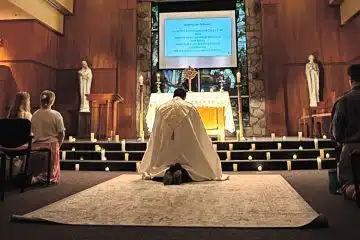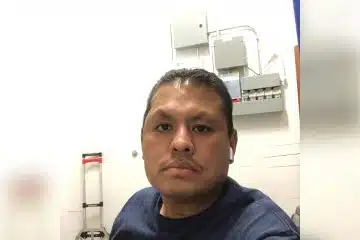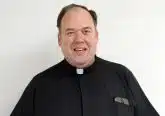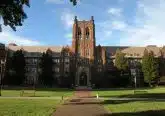Toledo Priest convicted of murder dies; funeral Mass planned
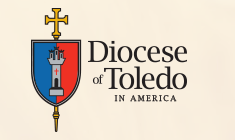
By Laurie Stevens Bertke Catholic News Service
TOLEDO — Though he was convicted of murder in 2006, the late Father Gerald Robinson remained a priest at the time of his death and as such his funeral is to follow “the usual protocol for a diocesan priest’s funeral.”
The announcement made in a diocesan statement issued July 5, the day after Father Robinson died in a prison hospital, was met with anger and hostility by some who criticized the decision to give a convicted murderer a priest’s funeral. Plans for the funeral were still pending.
Father Robinson, 76, was serving a 15-years-to-life sentence for the 1980 murder of Mercy Sister Margaret Ann Pahl when he died in the custody of the Ohio Department of Corrections. After his conviction in 2006, the priest was not allowed to practice his ministry publicly, but he remained a priest of the Diocese of Toledo while his case was being appealed. The appeals process was not completed before his death.
Father Charles Ritter, diocesan administrator, attributes much of the uproar over the funeral announcement to a misunderstanding of the purpose of the Catholic funeral liturgy.
“More and more today in our culture, funerals are gatherings to honor a person who has died,” Father Ritter said. But in the Catholic tradition, the funeral Mass is not about honoring anyone.
“We are gathering on the occasion of death to pray for the person who has died,” he told the Catholic Chronicle, Toledo’s diocesan newspaper.
While Father Robinson’s priestly ministry is to be acknowledged at his funeral Mass, the rites to be used have been simplified in this case and will more closely resemble the funeral Mass that would be celebrated for any baptized Catholic, according to Msgr. Charles Singler, director of the diocesan Office of Divine Worship.
At a typical funeral for a priest, the rite of reception of the body is celebrated the day before the funeral at the church and an evening prayer service is celebrated with the body present.
Msgr. Singler said that rite will not be celebrated in this case. Visitation for Father Robinson is to be conducted at the funeral home and immediately prior to Mass at church.
The casket will be sprinkled with holy water and clothed with the pall, signifying Christian baptism. A priest’s stole and a crucifix will also be placed upon the casket.
The rest of the liturgy will include the traditional prayers prescribed by the church, with the inclusion of some prayers for a deceased priest and references to his service to the people, Msgr. Singler said.
At the conclusion of Mass, all vested priests in attendance will file out before the casket singing two Latin hymns that are traditionally sung at priest funerals, the “Salve Regina” and the “Ultima.”
Explaining the significance of the funeral in Catholic tradition, Msgr. Singler quoted from the general introduction to the Order of Christian Funerals: “Christians celebrate the funeral rites to offer worship, praise and thanksgiving to God for the gift of a life which has now been returned to God, the author of life and the hope of the just. … The church through its funeral rites commends the dead to God’s merciful love and pleads for the forgiveness of their sins.”
“We still believe that Father Robinson was a baptized Christian,” said Msgr. Singler. “What’s really important now at this point is that we are making an effort to give a deceased Christian a proper burial, whether he did this heinous crime or not. We are providing the burial rites of the church as they are prescribed.”
It is not uncommon for religious rites to be incorporated into the funeral or burial of a deceased inmate, according to Wanza Jackson, who supervises prison chaplains of all faiths as religious services administrator for the Ohio Department of Rehabilitation and Correction.
Usually the family of the deceased coordinates those details, she said. If there is no family to claim the body and the inmate has declared a religion, Jackson said a prison chaplain from that faith tradition oversees the burial process according to the appropriate religious customs.
In Catholic tradition, the Order of Christian Funerals specifies that the church “ministers to the sorrowing and consoles them in the funeral rites with the comforting word of God and the sacrament of the Eucharist.”
“We’re trying to bring solace to the friends and the family members of Father Robinson,” noted Msgr. Singler. “They have lost a brother and a companion, a friend.”
Father Robinson, who was ordained in 1964 and served in assignments across the diocese during his ministry, maintained his innocence until the time of his death.
“Whether in the eyes of God, Father Robinson was or was not guilty of this crime, I do not know,” Father Ritter said in the diocesan statement. “I do know that he is the work of God’s hands, as are we all. He was a sinner, as are we all. He was a baptized member of the body of Christ, and he was, and remains an ordained priest of the Roman Catholic Church. This is the context in which his funeral will take place.”
———
Stevens Bertke is staff writer and Web editor at the Catholic Chronicle, newspaper of the Diocese of Toledo.
Posted July 10, 2014


